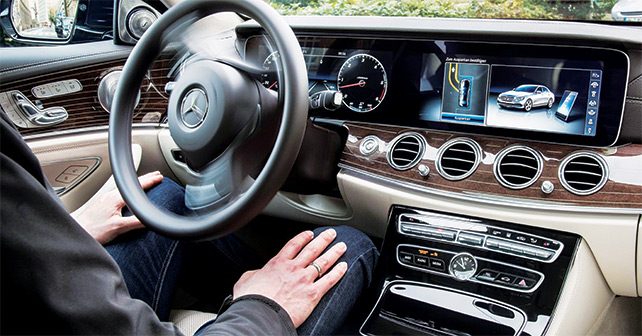
Karl has his first taste of autonomous motoring, and it puts him firmly on the path towards being a believer. Fortunately, he still turns it all off to have a little fun...
Sitting at 110km/h on the long, straight, flat stretch in front of us, I flick the lever up. The bottom of the screen acknowledges the movement; the same figure as on the stalk pops up on the display – confirming that the cruise control has been set. But look slightly to the left and a little steering wheel graphic goes from grey to green. This is it – we’re on.
Hands off the wheel. Feet off the pedals. I could hop into the back seat, but, of course, that would be madness. Except that’s where the industry’s headed, so it’s not really madness at all.
This is the future of motoring – autonomous driving. Except the car that I’m driving – or not driving, depending on your perspective – isn’t a self-driving car. But, really, it is. Confused? Well, so is my brain – because I’m supposed to be in control, yet the car is the one doing all the work.
Currently, self-driving cars are going through reams of red tape, as each manufacturer lobbies governments and road safety authorities, trying to prove how safe these machines really are. But the car I’m in (I won’t say driving, because I’m not), a Mercedes-Benz E-Class, which is doing the job pretty well, comes up against something it can’t cope with – road works.
The sign flashes past: “No lines marked. Do not overtake.” The steering wheel graphic at the bottom of the instrument screen loses its green illumination and becomes grey again. Sorry driver, it’s your turn. The car has lost its way. There are no lane markings for it to follow, no edge to track. While the adaptive cruise control is happily monitoring the car in front, braking when it does and accelerating to keep a set distance, the camera which literally watches the road is freaking out, biting its fingernails and wondering what on earth is going on.
This is where autonomous cars are going to struggle. This and roundabouts, where the road turns far too quickly and the lane markings are all over the place. Of course, there are talks that the satnav info will be overlayed, making sure that if there are no lanes it can rely on a bird’s eye view to know how the road curves. But that’s certainly not fool proof. One of my test cars earlier this year told me I was in the ocean, despite being a good 500 metres away on a road. Solar flares interfere with satellites, meaning there’s still some way to go before we have a system that can cover all the bases.
Don’t get me wrong, we will get there, but you can understand governments’ hesitance. We don’t want people being injured or killed simply to prove that we can make cars that drive themselves – there’s enough of that when people are in control.
The road works end. The car picks up the lane markings again and it steers the car faithfully along the sweeping left-hand bend, keeping us exactly in the middle of the lane. A short time later, the car reminds me to put my hands back on the wheel. A quick touch and it’s satisfied, keeping the steering wheel picture green and carrying on driving itself.
It was a fascinating insight into the technology that will be driving us in a few years, and a great way to kick off 2017. Thing is, after about 120km, I got bored. I switched everything off and took over the driving until we reached our destination.
In case you’re wondering, that last part of the drive was the most enjoyable.























Write your Comment